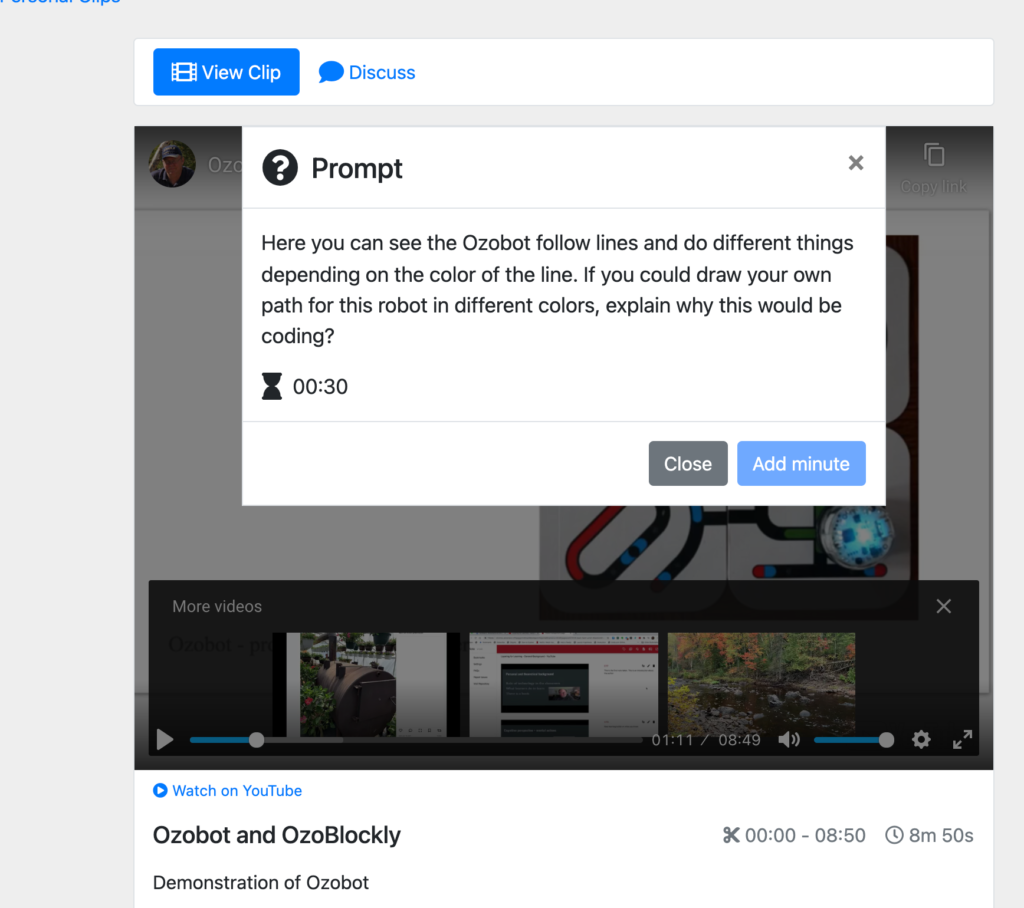Richard Byrne who writes the Free Tech 4 Teachers blog and I seem to have similar interests. In a recent post, he describes three services that allow an educator to add questions to a video. The idea is to encourage students thinking about what they will or have seen. This addition of question prompts to a video is an example of a process I describe as layering. There are different types of content that services allow you to layer on top of online content. Questions added to video or web pages are a good example and depending on the service one might also highlight, annotate, link, and embed a discussion opportunity. Again, depending on the service layering can be applied by the educator, student, or both.
I ask educators to recognize three different types of service that provide layering opportunities – the company owns the content and provides the layering service, the company owns the layering service and invites the educator to upload content to be layered, and the company provides a way to layer additions to content offered by a different company. My focus in the Primer I link to above is on the final category. The distinctions are important. For example, one would not necessarily have the rights necessary to take a video from one source and then upload it into the service provided by a different company (category 2). What I describe as category three involves those services that serve content from the original and layering service in a combined way that takes into account the rights of the content creator.
Byrne offers three examples one of which I would describe as Category 3 (Edpuzzle), one of which involves content authored by the educator (Screencastify), and one of which I would describe as Category 1 (Classhook). I tend to focus mainly on categories 2 and 3, but I did make the effort to explore Classhook.
Classhook offers users access to digital content organized in multiple ways (topic, standard) and offers teachers the opportunity to add “pause prompts” to this content and then assign the resulting instructional content to learners. Perusal and Amazon would be an example of a company that offers a layering opportunity for text content – buy the book and then layer highlights and annotations. Classhook does allow the uploads of video content and I used this option to upload a YouTube video I had created to explore the service. Depending on the rights expected by the content creator this would not be a good thing to do with content created by someone else. I assume this is why Classhook has already secured rights for the content it offers and focuses on this material.
So, the way Classhook works, the educator selects a video and then adds “pause prompts” at designated locations within the timeline of the video. When a learner plays the video, the video pauses at the designated time providing time for the learner to consider the question.
Classhook offers a free option for educators wanting to explore its service. For educators wanting to use the service on a regular basis, the cost is $9 a month with a discount if access is purchased for the year.
![]()


You must be logged in to post a comment.